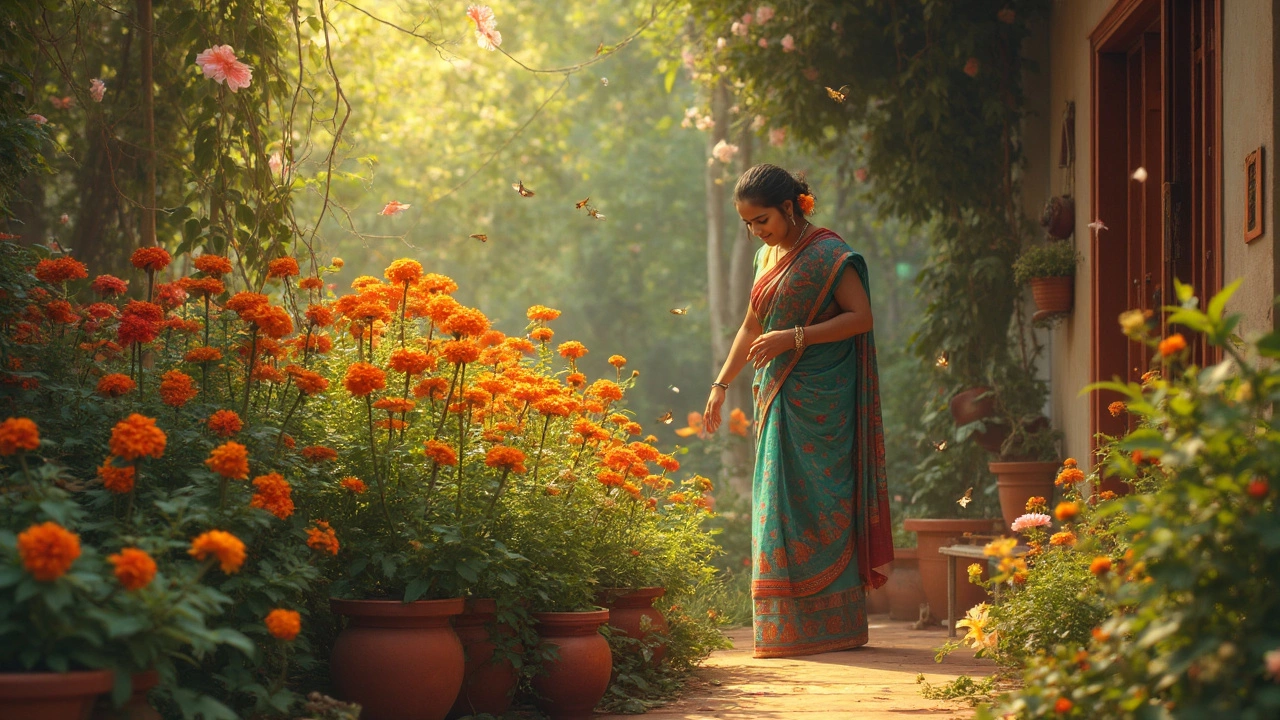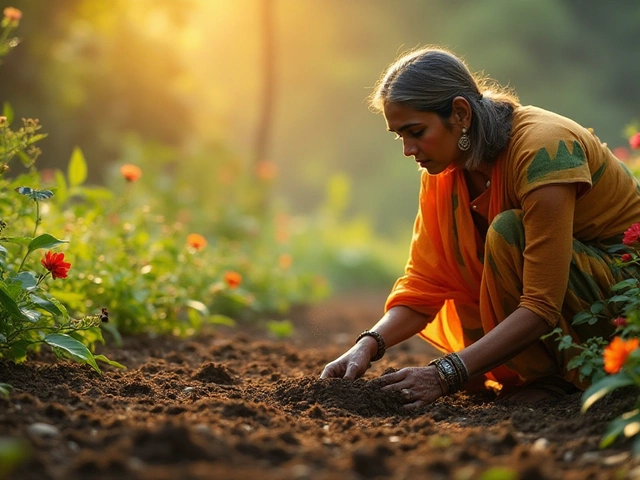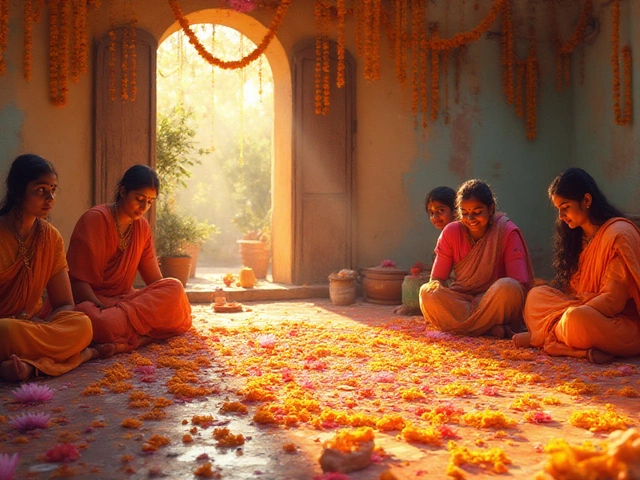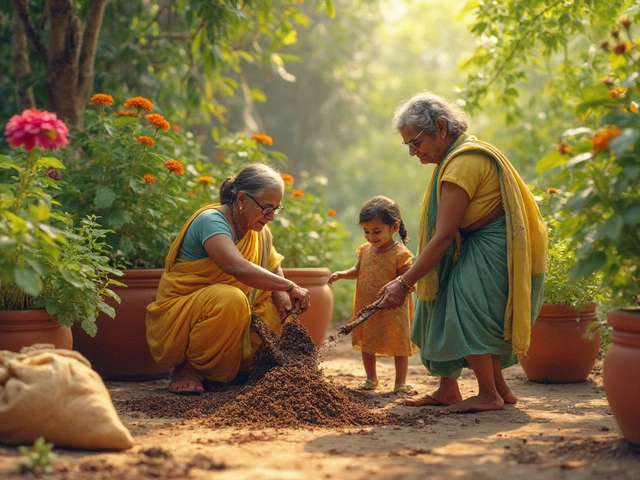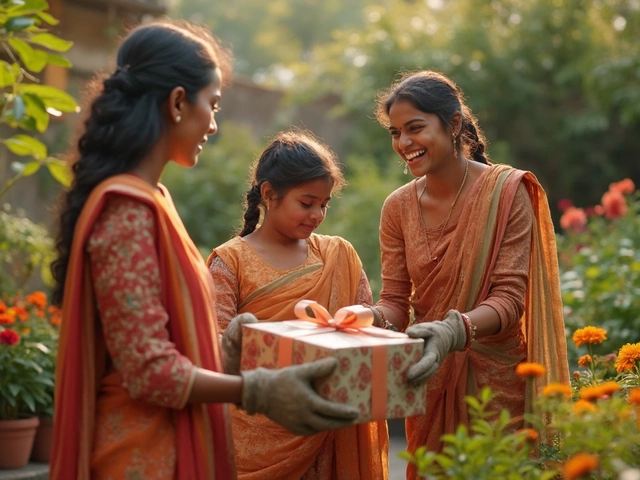Not everyone agrees on which flower is the most beautiful—what makes one bloom jaw-dropping in Delhi might get barely a glance in Tokyo. Still, some flowers have a magic that just grabs you. Is it the color? The shape? The way it fits into the garden?
If you're thinking about picking the "most beautiful flower" for your garden in India, it helps to know what you actually want: a rare bloom that gets neighbors talking, something easy to grow in your climate, or a flower with a scent that fills the whole house. Beauty isn't just about looks—some flowers are famous for their history or what they mean in local traditions.
The best part? You don’t need a huge space or fancy skills to enjoy jaw-dropping flowers. Even a single pot on a balcony can hold something really special. Before you run to the nursery, let’s break down what makes a flower pop and how you can tell which will work best for you.
- How Do We Decide Beauty in Flowers?
- Crowd Favorites: Flowers That Steal the Show
- Growing Stunning Flowers in Indian Gardens
- Surprising Facts and Garden Tips
How Do We Decide Beauty in Flowers?
Nobody has a universal rulebook for picking the most beautiful flower, but a few factors almost always matter. First is color. Flowers like the bright Gulmohar or glowing sunflowers catch a lot of eyes simply because they stand out in any garden. Some people lean toward unique shapes—think of the curled petals of a lotus versus the flat, open faces of daisies.
Fragrance plays a huge role. In India, a tuberose or jasmine bush can be the heart of any small garden, just for the way the scent lingers in the air. The story or meaning behind a flower changes things too. The rose isn’t just a Valentine’s Day favorite—it’s also a symbol for love in Indian culture. Lotus carries spiritual importance, especially in Hindu rituals.
It’s also about how the flower fits into the climate. There’s no point going after a fancy peony in Chennai’s heat—it won’t last. Flowers that look fresh and healthy in your region always seem more beautiful because they actually thrive.
Here's a table showing what people usually look for when they call a flower 'the most beautiful':
| Factor | Why It Matters | Popular Examples in India |
|---|---|---|
| Color | Eye-catching, makes a garden pop | Gulmohar, Hibiscus, Marigold |
| Fragrance | Adds mood, attracts pollinators | Jasmine, Tuberose, Champa |
| Shape | Uniqueness, creates focus points | Lotus, Orchid, Dahlia |
| Symbolism | Connects to tradition or meaning | Rose, Lotus, Marigold |
| Climate Suitability | Healthier blooms, easy to care | Bougainvillea, Jasmine, Cosmos |
If you look at how Instagram or garden shows work, you’ll notice flowers with the brightest color and the best stories always get more likes and attention. At the end of the day, “most beautiful” depends on what grabs you. But if you play around with color, smell, and tradition, you’ll probably end up with a flower that feels perfect for your garden.
Crowd Favorites: Flowers That Steal the Show
There’s a reason you keep seeing certain flowers on magazine covers and in Insta-worthy gardens—they’re not just classic, they make people stop and stare. Let’s talk about some of the usual suspects that keep popping up where it counts, both in India and around the globe.
The most beautiful flower is a big title, but you can't skip roses. India’s muggy summers and cooler winters are actually perfect for varieties like the Kashmiri Rose or the classic Hybrid Teas. They’re everywhere in events, gardens, and even poojas. What’s wild is that over 300 species of roses exist, but only a handful can handle Indian weather without turning into sad, droopy bushes.
Next up, lilies. These aren't just for fancy bouquets—Asiatic and Oriental lilies are super popular in India. They’ll brighten up home gardens, especially in the hills where the climate favors their growth. A fun fact: lilies show up in Indian wedding decorations since they symbolize purity and commitment.
Jasmines deserve a special mention. The Madurai Malli is so important in Tamil culture that it has a Geographical Indication tag! Women wear jasmine flowers in their hair for fragrance, but these blooms also show up in religious rituals pretty much everywhere in the south.
Let’s not leave out orchids. While they look exotic and tough to grow, a bunch of Indian states (like Sikkim) grow native orchids like Dendrobium and Cymbidium. Orchids have become a favorite at flower shows because of their wild color patterns and shapes.
Here’s a quick comparison table of a few favorites:
| Flower | Best Regions in India | Main Blooming Season | Popular Uses |
|---|---|---|---|
| Rose | All over, especially North India | October - February | Bouquets, festivals, perfume |
| Lily | Himachal, Uttarakhand | March - June | Decor, religious events |
| Jasmine | Tamil Nadu, Karnataka | March - August | Hair, rituals |
| Orchid | Northeast, Sikkim | March - October | Shows, gifting |
If you just want a guaranteed crowd-pleaser, plant marigolds. They’re not rare, but nothing makes an Indian festival or wedding look more vibrant. Plus, marigolds are easy to grow, bloom nonstop, and help keep pests away naturally.
So when you ask which flower really steals the show, it’s hard to pick a universal winner. Local traditions, climate, and even what your neighbors like to see can make a huge difference. But these classics have loyal fans for a reason—they look awesome, smell great, and fit into almost any garden plan.
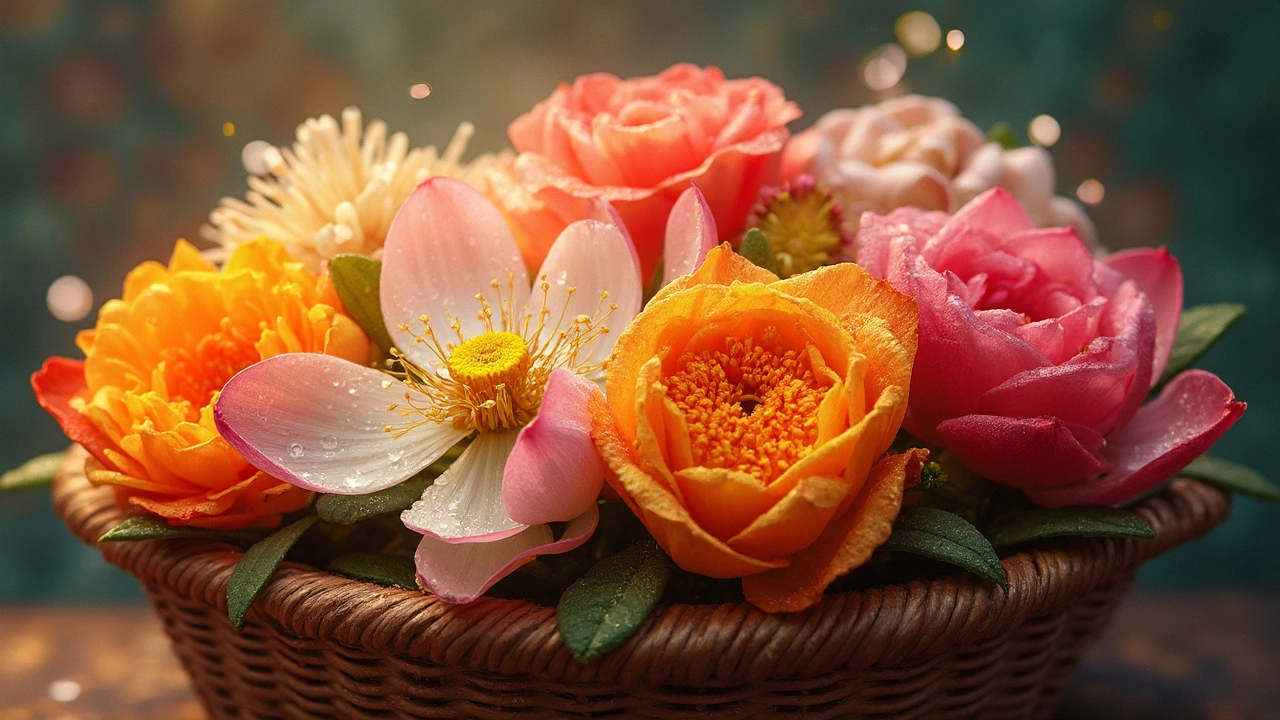
Growing Stunning Flowers in Indian Gardens
If you want wow-factor in your garden, it’s all about picking the right flowers for your region. Not everything that looks good in a catalog will thrive outside your window—especially with India’s mix of climates from the chilly North to the humid South. It’s smart to go local or pick flowers that have proven they can handle the heat, dust, or even those big monsoon rains.
Here’s a fact-check: India’s most-loved blooms are easy picks for a reason. Take the marigold, for example. Besides being a staple in festivals, marigolds are total champs when it comes to low-maintenance gardening. They shrug off pests, grow fast, and light up gardens even during a scorching summer. Same goes for the hibiscus—a flower celebrated from Kerala to Kolkata for its bold colors and ability to handle heavy rain with no drama.
A little extra effort goes a long way if you want your patch to stand out. Focus on sunlight, water, and soil—seriously, most failed gardens just get one of these wrong. Here’s a basic game plan:
- Check how many hours of sunlight your garden actually gets. Roses, bougainvillea, and sunflowers need at least 6 hours.
- Good soil means it drains well but keeps just enough moisture. Mix compost in. No one regrets it.
- Don’t drown your plants—overwatering is the fastest way to ruining a beautiful flower bed.
“Always match your plant selection to your local climate and soil. It’s the difference between constant headaches and a garden that almost runs itself.” — Dr. P.V. Madhusudanan, Indian Horticultural Society
If you’re new or just want some reliable options, here’s a go-to starter list that works in most parts of the country:
- Marigold (Tagetes): Thrives in sun, easy to maintain, and even repels bugs.
- Hibiscus: Loves full sun and regular watering. Flowers nearly all year in southern states.
- Jasmine (Mogra): Needs warm temperatures and space to climb; smells amazing in the evenings.
- Roses: Pick disease-resistant Indian varieties for best luck.
- Bougainvillea: Basically bombproof as long as it’s sunny and dry.
| Flower | Best Region | Water Needs | Flowering Season |
|---|---|---|---|
| Marigold | All India | Moderate | Year-round |
| Hibiscus | South, East, Coastal | High | Year-round |
| Jasmine | North, Central | Moderate | Summer |
| Rose | Pan India (winter best in North) | Moderate | Winter-Spring |
| Bougainvillea | All India (doesn’t like frost) | Low | Spring-Summer |
If you’ve got the basics down and want to flex your plant game, experiment with lilies, lotus, or even orchids for terrace setups. But as long as you get sunlight, soil, and water right, even classics like marigold can make your garden look world-class.
Surprising Facts and Garden Tips
People go nuts for flowers like the rose or the lotus, but did you know the lotus holds a special place in Indian culture? It’s India’s national flower—plus, it's considered a symbol of purity and new beginnings. Interestingly, the lotus isn’t just for show: the seeds and roots are actually used in some Indian dishes, and they’re packed full of nutrients.
Jasmine is another showstopper, especially in South India. It’s not just grown for its looks—the scent is huge in weddings and traditional ceremonies. Jasmine oil is even used in some natural perfumes.
Here are some practical garden tips if you want your own garden to look and smell amazing:
- Sunlight matters. Most dazzling flowers like marigold, bougainvillea, or hibiscus need plenty of direct sun. Don’t crowd them behind taller plants or walls.
- Soil can make or break your garden. Mix some compost or dried cow manure into your soil every month. It keeps the flowers healthy and helps them bloom longer.
- Water early in the morning or after sunset, so heat doesn’t evaporate moisture too fast. Overwatering is just as bad as underwatering—wait until the top inch of soil is dry.
- For apartment dwellers, try balcony or windowsill pots. Petunias and zinnias are tough and bloom most of the year.
One more thing: don’t skip pruning. Cutting off faded flowers helps some plants put out even more blooms. And if you want to grow the most beautiful flower in your area, always pick varieties that can handle the local weather—Indian summers can be brutal for delicate imports.
Last fun fact—sunflowers actually follow the sun as it moves across the sky. If you plant them near a wall in full sun, you’ll actually see them turn through the day. Nature’s little show, right in your own garden.
